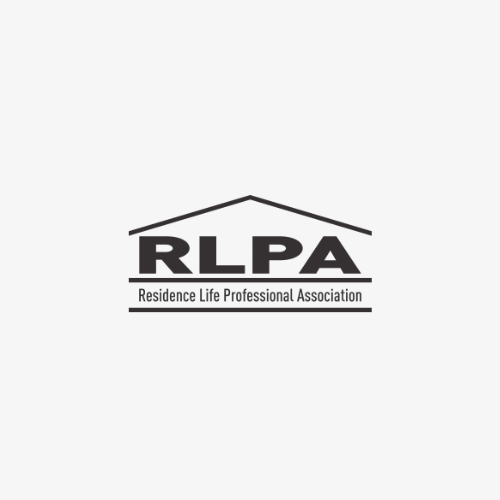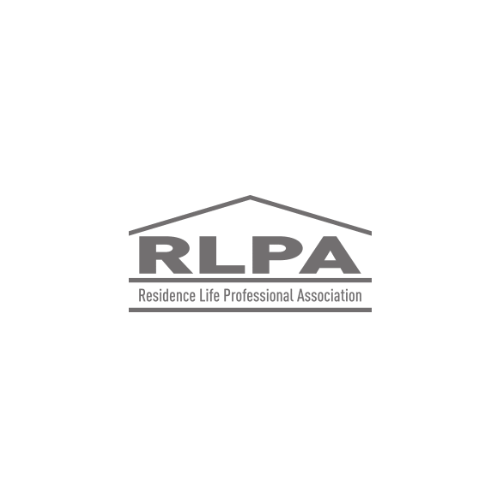Home / History
In 1986, several Chief Housing Officers in Alberta began discussing common themes that they were experiencing on their respective campuses. While these conversations were not unique, and networking was commonplace within residences, the concept of an organized body to house these discussions began to take shape. Blaine Jensen of Lethbridge Community College began to discuss the concept with his former boss, Dr. Wyn Gittens at the University of Alberta, and soon Bill Knibbs (MHC), Pete Fraser (U of C), Omar Moghrabi (AVC) and Bill Glover (U of L) were endorsing the concept. The group met formally as a body in 1987 under the name the “Residence Life Personnel of Alberta” and the acronym RLPA was born.


While there were a number of professional organizations already existing that allowed housing staff to develop professionally (ACUHO-I and NW/ACUHO), the RLPA offered a strength that other organizations did not. The RLPA allowed a focus on Canadian subjects, and at the time specifically Alberta housing issues that were given low priority at larger American-dominated conferences. Lower travel costs were incurred attending provincial meetings and the exchange rate did not negatively affect the smaller budgets of regional colleges. In short, everyone could participate and they got bang for their buck. The uniqueness of the Canadian legal system, the lower drinking age, and Alberta’s Residential Tenancy Act could all be discussed and considered in context with Canadian staff dealing with similar issues.
Further, while Student Services Conferences also existed with a Canadian context (CACUSS, ASSC, etc.), no other group concentrated solely on housing-specific issues. The group’s initial goal was to network and share, learning from each other and honing their understanding of their work. The initial meetings were simply roundtables where each brought challenges and ideas to be jointly considered and discussed. In the days before widespread Email use, shared discussion was best facilitated face-to-face and these meetings were well attended. Facilities issues, external contracts, the selection and training of student staff, campus relationships, organizational structures and rent comparisons were all common topics. It did not take long for the growing group to decide that making the meetings slightly more formal may be beneficial.


The group developed a constitution, formal objectives, and elected leadership positions in 1989. By then the group had grown to include 15 colleges and universities from Alberta, as well as occasional attendance from Saskatchewan, Eastern BC and the Territories. The group had clearly uncovered a need and the sharing of information became formalized. The RLPA began to organize professional development activities for clerical and support staff, as well as for student leaders within their systems. Such training brought an economy of scale to staff development, allowed broader networking, and allowed more junior staff to see the big picture. Indeed, as the early 90s rolled on, the Chief Housing Officers at some institutions took a step back, relying on the new structure to legitimize the meetings and allowing more junior staff to represent their institution. The association was fulfilling the need for which it was intended.
In 1992, there was a recognition that rents were being benchmarked across institutions without an understanding of what the rooms in other institutions looked like. A residence tour was conducted where staff from around the province toured residences at Alberta colleges and universities. On this tour, the concept of an intra-institution survey was born, and the concept remains to this day. Annually the RLPA collects information on rents, tax rates, staff structures, etc. in a tradition begun more than a decade ago.
The RLPA continued to evolve and membership from outside the Province began to grow. Regular attendance and participation by schools from outside of Alberta led the group to change its name to the “Residence Life Professional Association” in 1999. Today, the RLPA can look back on a record of providing networking and support activities for more than 30 institutions with 27 holding current and active memberships. It’s a record of success that would make its originators proud.

| Year | Name |
|---|---|
| 1988-1991 | Blaine Jensen |
| 1991-1992 | Wyn Gittins |
| 1992-1993 | Alvin Moore |
| 1993-1994 | Mark Chytracek |
| 1994-1995 | Sally Isaksen |
| 1995-1996 | Kim Sullivan |
| 1996-1997 | H. Garth Racher |
| 1997-1998 | Glenice Grover |
| 1998-1999 | Bill Bradley |
| 1999-2000 | Josie Lamothe |
| 2000-2001 | Doug Wagstaff |
| 2001-2002 | Jason Novak |
| 2002-2003 | Sean Hunter |
| 2003-2004 | Tracy Mason |
| 2004-2005 | Sylvia Cholodnuik |
| 2005-2006 | Randy Maus |
| 2006-2007 | Randy Fines |
| 2007-2008 | Janet Athanasiou |
| 2008-2009 | Mark Chytracek |
| 2009-2010 | Dima Utgoff |
| 2010-2011 | Tim Siemens |
| 2011-2012 | Chris Fukushima |
| 2012-2013 | Clint Galloway |
| 2013-2014 | Glenda Staples |
| 2014-2015 | Judy Eyben |
| 2015-2016 | Randy Maus |
| 2016-2017 | Trent Nabe |
| 2017-2018 | Natasha Reynolds |
| 2018-2019 | Rob Ford |
| 2019-2020 | Zoe Woods |
| 2020-2021 | Dillon Andrus |
| 2021-2022 | Meghan Reiser |
| 2022-2023 | Nathan Riley |
| 2023-2024 | Tyron Thomas |
| 2024 – 2025 | Prabhjot Vig |